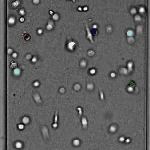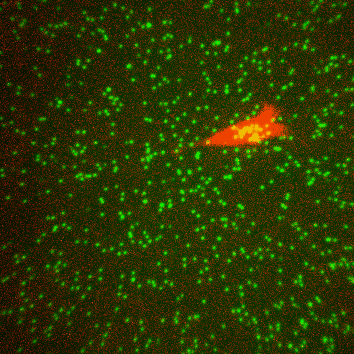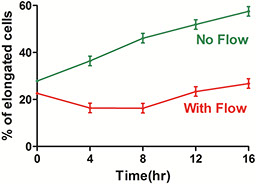Cancer Cell Invasion
Cancer metastasis is the leading cause of all cancer death. However, roles of microenvironment in promoting cancer cells to migrate from its primary tumor site to a foreign site is poorly understood. Towards this front, our lab has developed a number of physiologically realistic 3D microfluidic devices to investigate roles of chemical gradients, matrix mechanics and fluid flows in cancer cell invasion.

3D Microfluidic Cancer Cell Chemoinvasion Model (Beum Jun Kim)
Cancer cells are constantly communicating with its microenvironment through chemokine and growth factor gradients. In this work, we study how cancer cells migrate in respond to chemokine gradients. READ MORE.

Cancer Cell Mechanics in 3D Collagen ECM (Matthew Hall and Xinzeng Feng)
Mechanical interaction between the cell and its extracellular matrix (ECM) regulates cellular behaviors, including proliferation, differentiation, adhesion and migration. Cells require the three dimensional (3D) architectural support of the ECM to perform physiologically realistic functions. READ MORE.

Interstitial Flows on Cancer Cell Invasion Revealed by a 3D Microfluidic model (Yu Ling Huang, Chih-kuan Tung, and Angela Zheng)
We investigate how interstitial and intramural flows modulate cancer cell invasion. Interstitial fluid flow is caused by the hydrostatic and osmotic pressure differences between the arterial and venous or lymphatic vessels, and it drains towards lymph nodes. Clinically, it is known that many cancer types metastasize to lymph nodes first. READ MORE.
Publications:
1. Mingming Wu and Melody Swartz, Modeling tumor microenvironment in vitro, Journal of Biomechanical Engineering, DOI:10.1115/1.4026447 (2014).
2. Beum Jun Kim, Pimkhuan Hannanta-anan, Michelle Chau, Yoon Soo Kim, Melody A. Swartz, and Mingming Wu, Cooperative roles of SDF-1a and EGF gradients on tumor cell migration revealed by a robust 3D microfluidic model, PLoS ONE 8(7): e68422. DOI:10.1371/journal.pone.0068422 (2013).
3. Matthew S. Hall, Rong Long, Xinzeng Feng, YuLing Huang, Chung-Yuen Hui, and Mingming Wu, Towards single cell traction microscopy within 3D collagen matrices, Experimental Cell Research, DOI: 10.1016/j.yexcr.2013.06.009 (2013)
4. Beum Jun Kim and Mingming Wu, Microfluidics for mammalian cell chemotaxis, invited review, Annals of Biomedical Engineering, 40, 1316-1327 (2012).
5. Matthew S. Hall, Rong Long, Chung-Yuen Hui and Mingming Wu, Mapping 3D stress and strain fields within a soft hydrogel using a fluorescence microscope, Biophys J.,102, 2241-2250 (2012).
6. Rong Long, Matthew S. Hall, Mingming Wu, and Chung-Yuen Hui, Effects of gel thickness on microscopic indentation measurements of gel modulus, Biophysics Journal, 108, 5614-5619 (2011).
7. Chih-kuan Tung, Oleh Krupa, Elif Apyadin, Jr-Jiun Liou, Anthony Diaz-Santana, Beum Jun Kim, and Mingming Wu, A contact line pinning based microfluidic platform for modeling physiological flows, Lab-on-a-chip, 13(19):3876-3885 (2013).
Site created and maintained by Young Joon Suh

